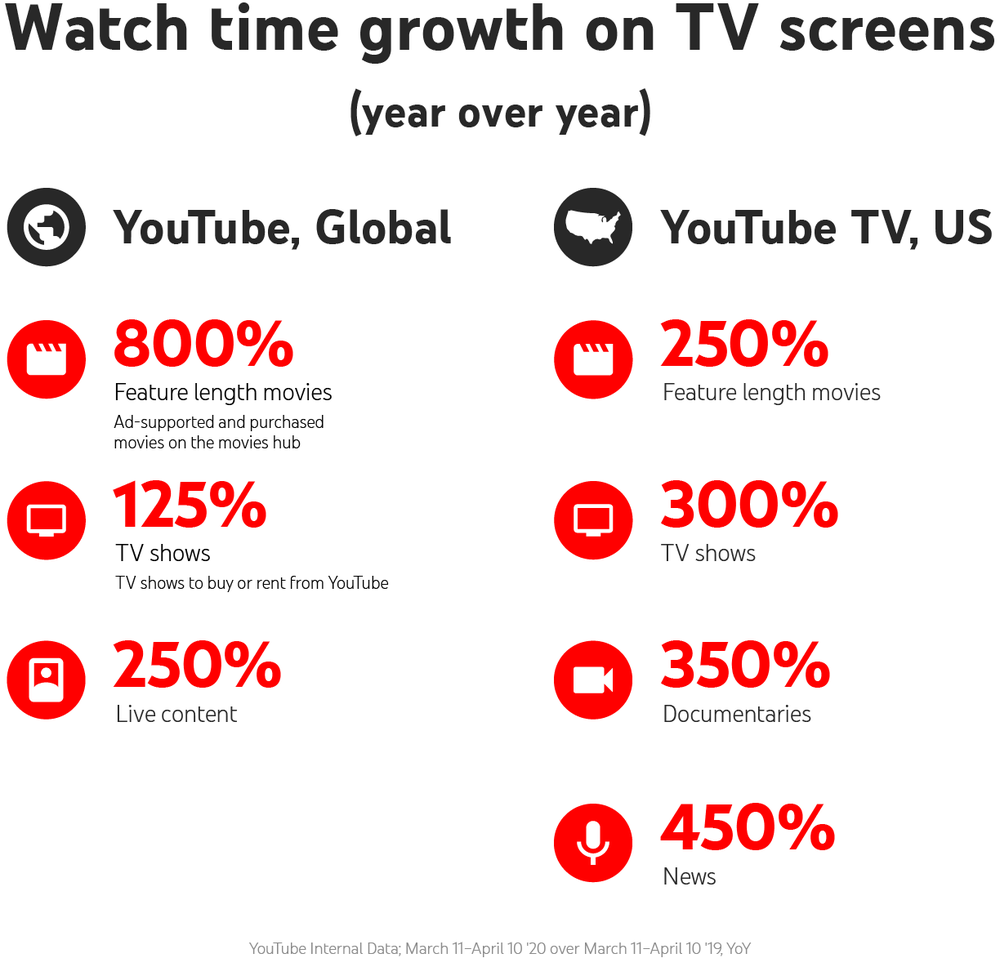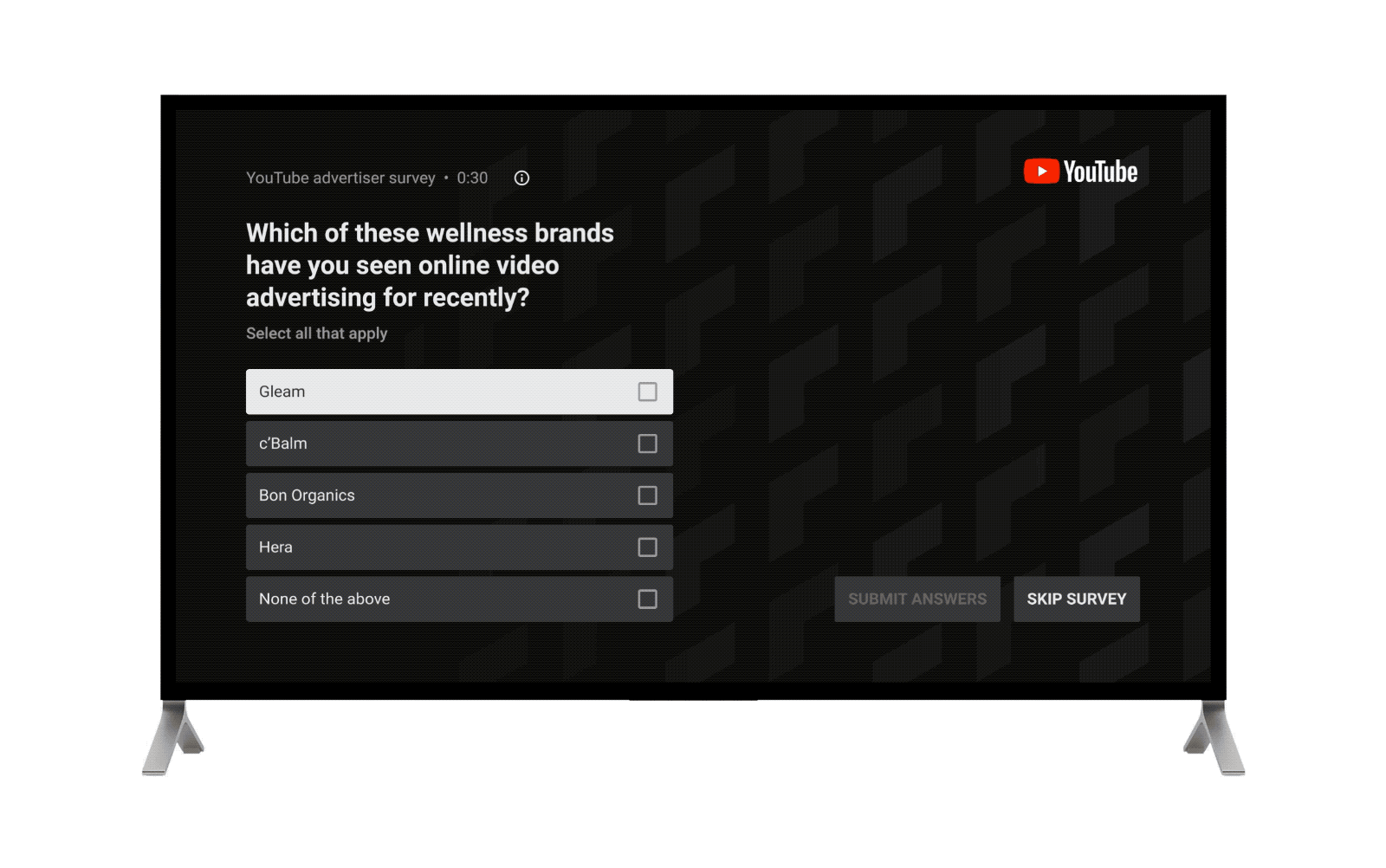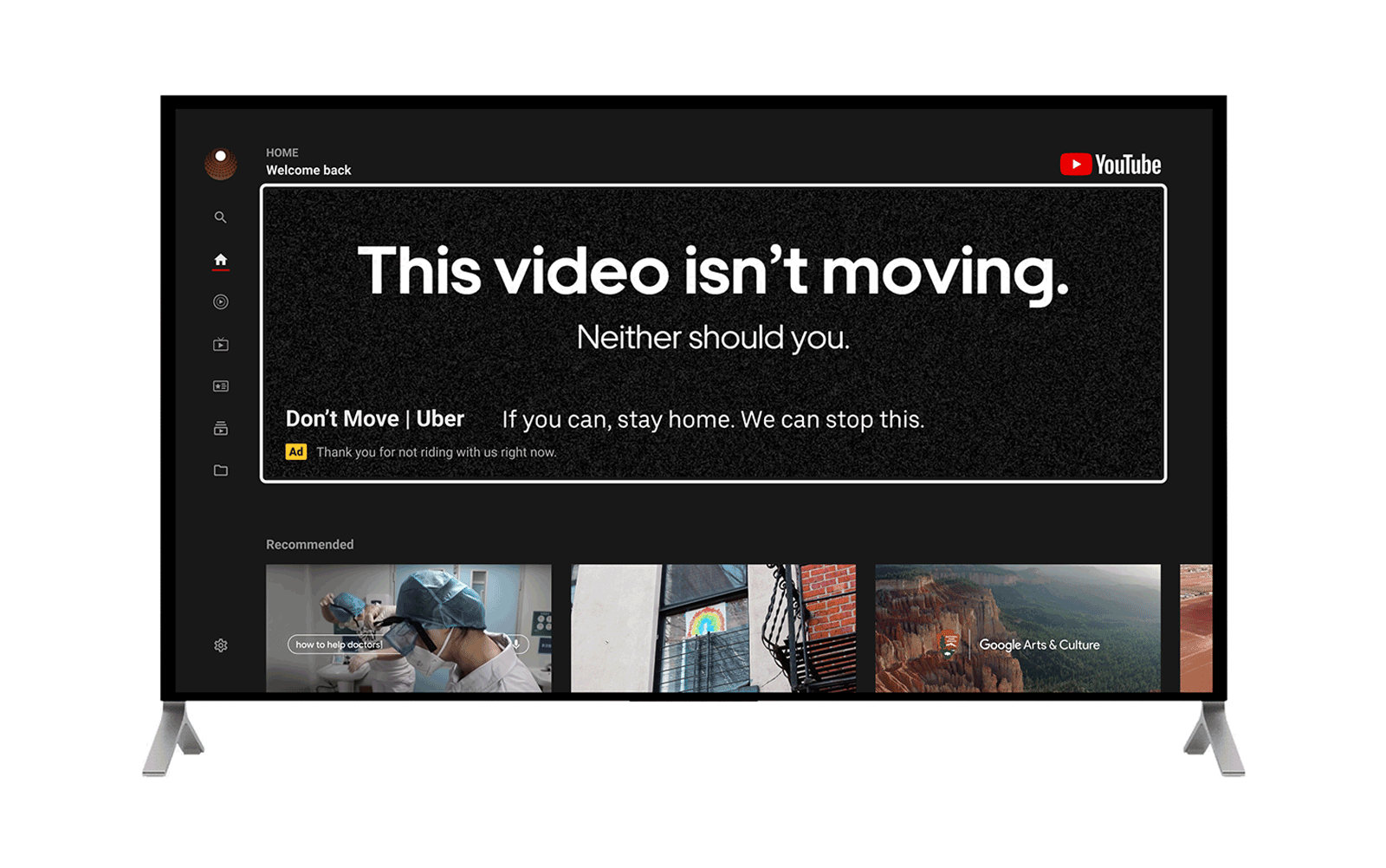The digital video boom is here. As people spend more time at home and the need for relevant, fresh content is at an all time high, the shift from linear to digital video is accelerating.
On YouTube in particular, over 2 billion people globally are gravitating toward timely content, from live entertainment like Post Malone's livestreamed living room concerts to transformative current events like rallying cries for racial justice from creators. They are also favoring the TV screen—with watch time growing across regions. In the US for example, watch time on YouTube and YouTube TV on TV screens jumped 80 percent year over year.
Leading brands are making the most of YouTube’s massive reach and deeply relevant content to build brand awareness, and ultimately, drive results at scale. Today, we're sharing new ways to help advertisers achieve these goals, including expanded reach planning solutions and advanced contextual targeting—a new and better way to show up in the right contexts for your customers.
Expanded tools to drive efficient reach and fuel your awareness strategy on YouTube
More viewership and the right mix of tools to reach a growing audience means that YouTube can offer incremental reach for the same budget. In the US, our relationship with Nielsen helps advertisers find the right mix. On average, advertisers saw that shifting just 20% of spend from TV to YouTube generated a 25% increase to the total campaign reach within their target audience, lowering the cost per reach point by almost 20%, across 21 Share Shift studies we've commissioned from Nielsen.1 To help global marketers, we are expanding our evaluation of Nielsen’s Total Ad Ratings to the UK and Italy.
When marketers include YouTube to drive efficient reach, they are seeing it pay off in real business results. Katie Haniffy, Head of Media, PepsiCo Beverages, turned to YouTube to drive scale and extend reach of Pepsi’s “Gift it Forward” Holiday campaign. The creative, starring Cardi B, celebrated the gifting mindset during the holiday season. "We knew YouTube had to play a critical role in ‘Gift it Forward’ as it continues to deliver strong performance across the beverage portfolio. The ‘Gift it Forward’ campaign did not disappoint—YouTube drove new brand buyers during the holiday season to the unique audience we wanted to reach.”
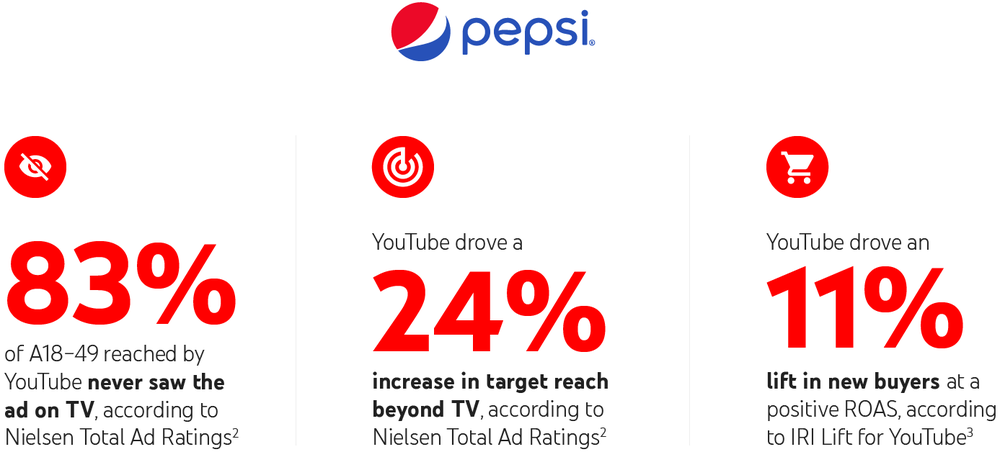
To help you easily plan campaign strategies that take advantage of this incremental reach beyond TV, soon we are also expanding TV data in Reach Planner to more countries, including France, Spain and Vietnam.
Additionally, if you’re looking to plan YouTube with other online video partners, we’re enabling reach planning capabilities across your entire campaign in Display & Video 360 including YouTube, auction and programmatic deals.

Use Video reach campaigns for a simpler way to buy efficient reach across ad formats.
Since launch, we’ve seen when advertisers combine skippable in-stream ads and bumpers into one campaign optimized for unique reach, they see higher lifts in Brand Awareness than advertisers who bought either format on its own.4 Marion Carpentier, Omni Business Leader at French men’s wear brand, Jules, says “By combining multiple formats into one campaign on YouTube, we were not only able to reach incremental audiences at a more optimal frequency compared to other video partners, but were able to drive a relative brand lift of 4.9 percent.”
A new way to show up in the right contexts for your brand
YouTube’s ability to drive mass reach means we can also deliver scale in specific contexts that matter for consumers and your brand. To make it easier to discover the content that’s best for you, today we are announcing YouTube dynamic lineups—powered by advanced contextual targeting.
Advanced contextual targeting is the next generation of content targeting on YouTube. It uses Google's machine learning to better understand each channel on YouTube, including analysis of video imagery, sound, speech and text.

How advanced contextual targeting works
This allows us to create lineups5 that are scalable across content based on specific topics, cultural moments or popularity. For example, in addition to home or lifestyle lineups in most markets, you can find more nuanced choices like “home and garden” and “home improvement.” This means better access to customers with unique interests and needs—all with the brand suitability controls that are most important for your business.
It also means you’re able to drive greater impact for your brand. A recent study conducted by Google and Ipsos in the US found that video advertising based on consumer interest and intent has significantly more impact than demo—with a 32 percent higher lift in ad recall and 100 percent higher lift in purchase intent.

Complement your audience strategy with dynamic lineups to maximize reach.
Early adopters like OMD are seeing strong results using YouTube dynamic lineups to complement their existing audience strategies. Chrissie Hanson, Global Chief Strategy Officer at OMD says, “Using lineups powered by advanced contextual targeting delivers a more relevant and empathetic understanding of audiences. This in turn serves to drive more relevant reach and efficiencies for our customers, as part of a broader program that leverages audiences and other tactics across YouTube."
YouTube dynamic lineups are launching on a rolling basis starting today and will be fully available by the end of September in ten markets. They are available across both Google Ads and Display & Video 360, with more countries coming soon.
From sales to ROI—deliver the results that matter
Most importantly, efficient reach and relevant ad experiences must drive not only awareness, but also business results. Across global Marketing Mix Modeling studies we’ve commissioned from Nielsen, we’ve seen YouTube deliver the bottom line results you care about.
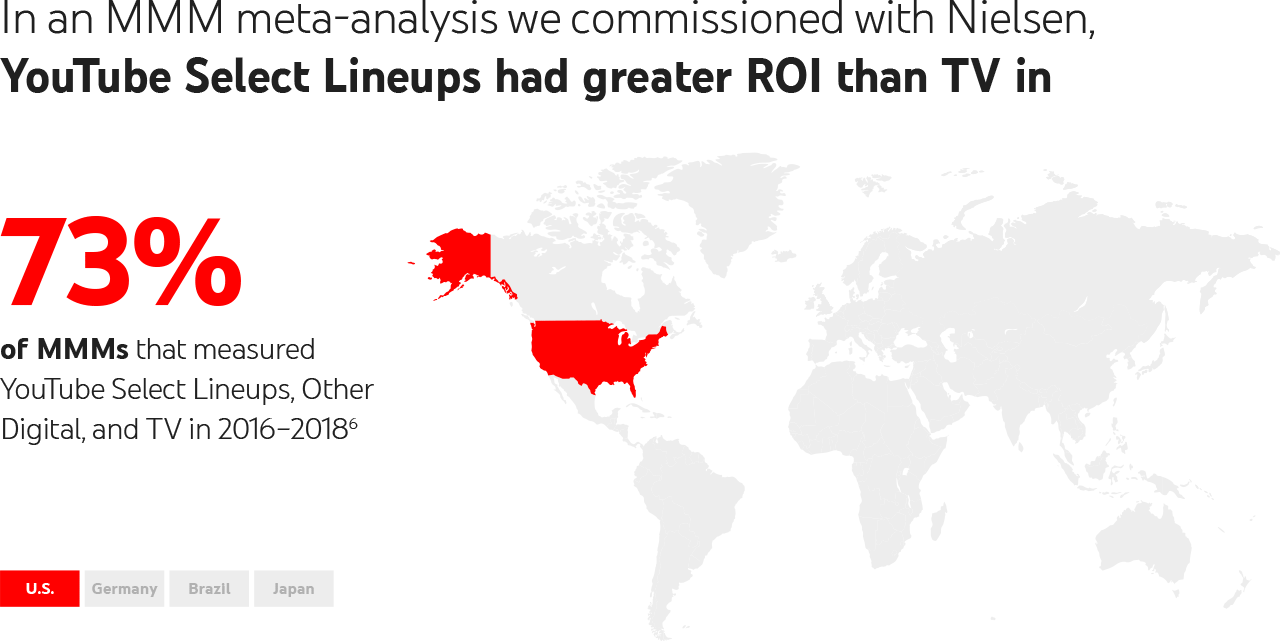
Check out our new awareness collection—from success stories to trends
We’re sharing a new collection of resources on our Advertising Solutions Center to help you build awareness for this new world. You’ll hear first-hand perspectives from companies like PepsiCo, Domino’s and Jules, delve into trends driving YouTube viewership and learn about our newest product innovations built to better meet your awareness objectives. We’ll continue to roll out more content on the Advertising Solutions Center in the coming weeks.
We hope these latest updates will help you build your brand for today, and create resiliency for tomorrow.
Reach out to your Google sales rep to learn more about the solutions above, including best practices on campaign set-up, how to apply for the Video reach campaigns beta and how to access YouTube dynamic lineups in your market.
1. Nielsen Share Shift Meta Analysis commissioned by Google including 21 NMI Share Shift US studies inclusive of YouTube in-app traffic utilizing target audiences running 1/1/19-5/5/20 across desktop, mobile and TV; across 9 demos; average total TV+YouTube budget $17.3M.
2. Nielsen Total Ad Ratings, Pepsi Holiday campaign across TV and YouTube among P18-49, 11/11/19-12/29/19
3. IRI Lift for YouTube, Pepsi TM Q4’19 Holiday Sales Impact Analysis, June 2020
4. Google Brand Lift, Global, Jan 2019 - May 2020
5. Lineups are packages of channels based on a topic, cultural moment or popularity.
6. Commissioned Nielsen MMM Meta-Analysis, 2016-2018. Base: a list of studies selected and compiled by Nielsen, consisting of all available CPG studies completed in 2016-2018 that contain YouTube Select, Other Digital, and TV results. This list includes 45 studies for US Brands across all CPG categories. ROI is “Retail ROI,” defined as total incremental sales divided by total media spend. Incremental offline retail sales measured for TV represents average across all TV broadcasters.
7. Commissioned Nielsen MMM Meta-Analysis, 2016-2018. Base: a list of studies selected and compiled by Nielsen, consisting of all available CPG studies completed in 2016-2018 that contain YouTube, Other Digital, and TV results. This list includes 117 studies for German Brands across all CPG categories. ROI is “Retail ROI,” defined as total incremental sales divided by total media spend. Incremental offline retail sales measured for TV represents average across all TV broadcasters.
8. Commissioned Nielsen MMM meta-analysis, 2016-2018. YouTube effectiveness was 8.4 compared to TV effectiveness of 0.19. Base: A list of studies selected and compiled by Nielsen, consisting of all available CPG studies completed in 2016-2018 that contain YouTube, Other Digital and TV results. This list includes 96 studies for Brazil Brands across all CPG categories.Incremental offline retail sales measured for TV represents average across all TV broadcasters. Effectiveness is defined as total incremental sales per 1,000 impressions. Studies were excluded if either channel had fewer than 500 impressions. The Effectiveness numbers in the claim are impression-weighted averages across all studies for each channel.
9. Commissioned Nielsen MMM meta-analysis, 2016-2018. YouTube effectiveness was $9.69 compared to TV effectiveness of $3.20. Base: A list of studies selected and compiled by Nielsen, consisting of all available CPG studies completed in 2017-2018 that contain YouTube, Other Digital and TV results. This list includes 37 studies for Japan Brands across all CPG categories.Incremental offline retail sales measured for TV represents average across all TV broadcasters. Effectiveness is defined as total incremental sales per 1,000 impressions (in USD). Studies were excluded if either channel had fewer than 500 impressions. The Effectiveness numbers in the claim are impression-weighted averages across all studies for each channel.
